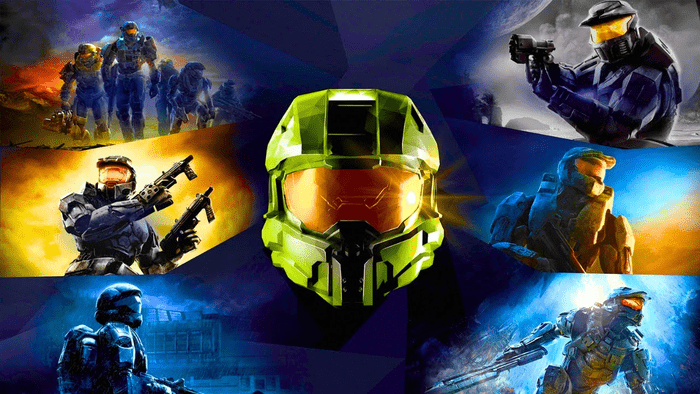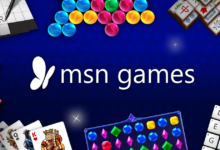Halo (2003) Game Icons Banners: A Detailed Guide

The gaming world has always been rich with iconic moments, characters, and visuals, and Halo (2003) is no exception. Among the many recognizable features of the game, Halo (2003) game icons banners stand out as an essential part of its visual identity. These elements not only added a sense of immersion but also created a lasting impression on the gaming community. In this article, we’ll dive deep into the fascinating world of Halo’s game icons and banners, exploring their history, design, and lasting impact on the franchise.
A Look Back at Halo (2003)
To fully understand the importance of Halo (2003) game icons banners, we need to take a quick trip down memory lane. Launched in 2003, Halo was developed by Bungie Studios and published by Microsoft Game Studios. The game was a monumental success, leading to the creation of a beloved franchise that would go on to influence the entire gaming industry. Its graphics, storyline, and multiplayer options were groundbreaking for the time, and the attention to detail in its visual elements—such as the icons and banners—played a large part in setting it apart from other games.
What Are Halo (2003) Game Icons?
In simple terms, game icons in Halo (2003) were small, symbolic images used throughout the game to represent various in-game features. Whether it was a symbol for weapons, objectives, or player stats, each icon was crafted to convey information quickly and clearly to players. These weren’t just random symbols; they were an integral part of the game’s user interface, helping to immerse players in the futuristic world of Halo.
Characteristics of Halo (2003) Game Icons:
- Simplicity: The icons were designed to be easy to recognize, even in the heat of battle.
- Color Coding: Different icons often used specific color schemes to represent factions, such as the blue of the United Nations Space Command (UNSC) or the red of the Covenant.
- Consistency: The icons remained uniform throughout the game, creating a cohesive experience.
Their design wasn’t just functional; it was artistic. The crisp, futuristic look of the icons perfectly matched the high-tech, sci-fi environment that players found themselves in while navigating Halo’s universe.
The Role of Game Banners in Halo (2003)
Much like the Halo (2003) game icons, banners played an important role in defining the game’s aesthetics. Banners, in this context, refer to the large, often symbolic images or textures that were used in the game’s interface, backgrounds, or multiplayer lobbies. These banners helped to set the tone and atmosphere of the game, creating a distinct identity for each faction, player, or setting.
Types of Banners Found in Halo (2003):
- Faction Banners: These were often seen in multiplayer modes and represented the different factions in the game, such as the UNSC and Covenant. Each faction had its unique banner, designed to evoke their identity and culture.
- Victory Banners: After completing certain missions or multiplayer matches, victory banners would be displayed to highlight achievements or rankings.
- Loading Screens: Banners were also a feature during loading screens, adding visual interest while players waited for the next action-packed segment to begin.
These banners did more than just look good—they helped players identify with the various teams and objectives they were fighting for. Like the icons, they were essential in bringing the world of Halo to life.
The Design of Halo (2003) Game Icons Banners
One of the reasons the Halo (2003) game icons banners were so iconic was their design. Bungie’s design team put a lot of effort into ensuring that the game’s visual elements were both functional and aesthetically pleasing. This was no easy task, especially considering the technical limitations of the time.
Key Design Elements:
- Clean Lines and Minimalism: The icons and banners were designed with clean lines and minimal details, ensuring they were easy to understand at a glance.
- Sci-Fi Inspiration: Drawing inspiration from science fiction, the banners often incorporated futuristic elements like glowing edges, metallic textures, and holographic visuals.
- Faction-Based Design: Each faction had its own distinct style, from the high-tech feel of the UNSC banners to the more alien, organic designs of the Covenant.
The game’s minimalist approach to design also meant that the icons and banners didn’t clutter the screen. Instead, they enhanced the overall gameplay experience, helping players stay focused on their objectives while providing useful information in an intuitive way.
The Lasting Impact of Halo (2003) Game Icons Banners
The Halo (2003) game icons banners were not only visually appealing but also left a lasting mark on the gaming world. Many modern games still use similar designs, following in the footsteps of Halo by ensuring their icons and banners serve both functional and aesthetic purposes.
Influence on Future Halo Titles
As the Halo franchise grew, the design philosophy behind its icons and banners evolved but remained rooted in the principles established in 2003. Later titles in the series continued to use clear, minimalistic iconography, which helped players navigate increasingly complex game worlds. In many ways, Halo (2003) set the standard for how to approach user interface design in a sci-fi setting.
Influence on the Gaming Industry
Halo wasn’t just influential within its own franchise. Many other games, especially first-person shooters, adopted similar design principles for their game icons and banners. Titles like Call of Duty and Destiny incorporated the idea of using faction-based banners and minimalist icons to help players stay immersed in the game.
The Customization of Game Icons and Banners
One of the exciting features of multiplayer in Halo (2003) was the ability for players to customize their banners. Although this feature was relatively limited in the original game, it laid the groundwork for more advanced customization options in later Halo titles. By allowing players to choose their own unique emblems or icons, Halo encouraged a sense of ownership and individuality within the game.
Why Customization Matters:
- Personalization: Players could select icons that matched their personal playstyle or team identity, adding an extra layer of immersion.
- Team Identity: In team-based multiplayer modes, custom banners helped build camaraderie and make each squad feel like a unique unit.
- Aesthetic Appeal: Let’s face it—having a cool banner or emblem just looked awesome! It added to the overall enjoyment and satisfaction of playing.
A Table to Summarize Key Points
| Feature | Role in Halo (2003) | Design Characteristics |
|---|---|---|
| Game Icons | Provide quick info to players | Minimalist, sci-fi-inspired, faction-based |
| Faction Banners | Represent different factions | Unique textures and colors for each faction |
| Victory Banners | Display after winning matches | Bold and celebratory, high visual impact |
| Loading Screen Banners | Add visual interest during loading | Subtle, atmospheric, thematic |
| Customization Options | Personalize multiplayer experience | Limited in 2003 but influential for the future |
Why Do Halo (2003) Game Icons Banners Matter Today?
Even though it’s been over two decades since Halo (2003) was released, the Halo (2003) game icons banners remain relevant. Gamers today still talk about how innovative and visually striking these elements were. They helped shape the identity of the Halo universe and established visual standards that would be used in many future games, both in the Halo series and beyond.
Additionally, for gamers who were there from the beginning, these icons and banners are more than just images—they’re nostalgic reminders of the early 2000s gaming culture. They represent an era where multiplayer first-person shooters were coming into their own, and Halo was leading the charge.
Conclusion: The Legacy of Halo (2003) Game Icons Banners
To wrap things up, the Halo (2003) game icons banners played a critical role in shaping the game’s visual identity and player experience. From their functional, easy-to-understand design to their role in building immersion, these visual elements have left a lasting impact on the gaming world.
Halo may have evolved over the years, but the foundation laid by the original icons and banners remains influential to this day. Whether you’re a longtime fan or new to the series, the design choices made in 2003 continue to inspire and impress, standing as a testament to the game’s enduring legacy.





